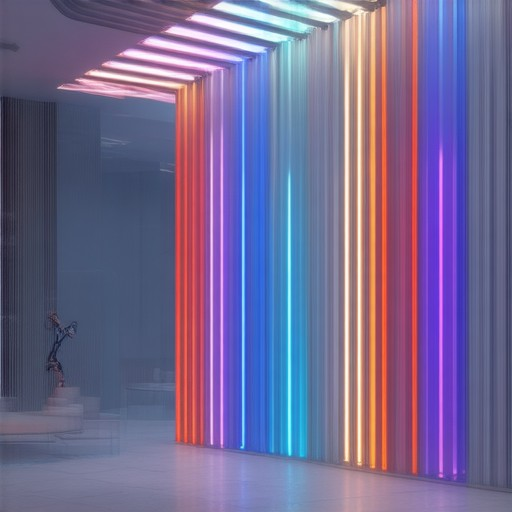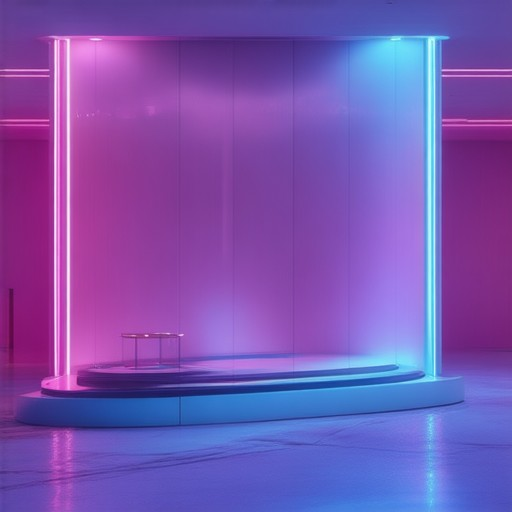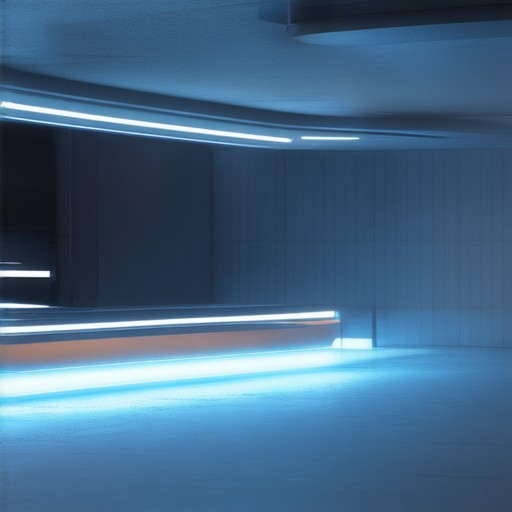As energy-consciousness continues to rise, so does the demand for sustainable solutions that reduce environmental impact while enhancing quality of life. One area that has garnered significant attention is energy-efficient lighting, which not only lowers utility bills but also contributes to a healthier planet. With advancements in technology, the market now offers a wide array of energy-saving options designed to meet diverse needs, from residential spaces to commercial environments. Whether you’re looking to reduce your carbon footprint or simply desire more cost-effective illumination, energy-efficient lighting presents a smarter, cleaner alternative to traditional lighting solutions. In this comprehensive guide, we explore the multifaceted benefits of energy-efficient lighting, including its environmental impact, cost savings, and design versatility, helping you make informed decisions about upgrading your lighting setup. By understanding the features that make a light bulb or fixture energy-efficient and the brands leading the charge in innovative lighting designs, you can select options that align with your lifestyle and goals. Join us as we delve into the essential aspects of energy-efficient lighting, uncovering why it’s not just a trend but a necessity for modern living.
Key Takeaways
- Maximize Energy Savings: Energy-efficient bulbs reduce electricity use and lower utility bills.
- Extend Bulb Life: LEDs last longer, cutting down on frequent replacements.
- Improve Color Accuracy: Better CRI for tasks needing precise color.
- Enhance Dimming Control: Works seamlessly with dimmers for varied lighting.
- Reduce Heat Generation: Cooler operation prevents hazards and extends bulb life.
- Support Sustainability: Contribute to a greener environment through reduced energy use.
- Diverse Design Options: Choose from various styles to fit any decor.
- Economic Value: Long-term savings outweigh initial costs, making them a wise investment.

What Are the Benefits of Energy-Efficient Lighting?
Energy-efficient lighting offers numerous advantages that extend beyond just cost savings. Here’s a breakdown of the key benefits:
- Reduces Electricity Costs : Energy-efficient lights consume less power, leading to lower monthly electricity bills and reducing reliance on the grid.
- Longer Lifespan : Many energy-efficient bulbs, such as LEDs, last significantly longer than traditional incandescent bulbs, reducing the frequency of replacements.
- Less Strain on the Grid : Lower energy consumption helps reduce demand on the electrical grid, promoting sustainability and preventing blackouts during peak times.
- Lower Carbon Footprint : Energy-efficient lighting produces fewer greenhouse gas emissions, contributing to global efforts against climate change.
- Reduced Risk of Power Outages : Efficient bulbs often operate on alternative energy sources, making homes and businesses more resilient during power shortages.
- Supports Sustainable Living : Using energy-efficient lighting aligns with eco-friendly lifestyles and helps create a more sustainable home environment.
When choosing energy-efficient lighting, look for options like LED bulbs, which are known for their durability and energy savings. Brands like Philips , LED Bulb Solutions , and EcoFlow offer high-quality products that combine efficiency with long lifespans and beautiful designs.
Eco Planeta Verde encourages everyone to adopt energy-efficient lighting solutions to contribute to a healthier planet and save money in the long run. Explore our energy-saving tips and discover how you can create a more sustainable home environment.
How to Choose Energy-Efficient Lighting Options
To select energy-efficient lighting options, consider the following factors:
- Bulb Type:
- LED Bulbs: Known for their longevity and energy efficiency, LED bulbs are ideal for general lighting. They come in various sizes and colors, making them versatile for different rooms.
- CFL Bulbs: Compact Fluorescent Lights are another efficient option, though they may require careful handling due to their sensitivity to vibrations and heat.
- LED Filament Strings: These resemble traditional bulbs but offer improved efficiency and longer lifespan, providing a warm light suitable for decorative purposes.
- Wattage and Lumens:
- Select bulbs with lower wattage to reduce energy consumption. Aim for a balance between wattage and lumen output to ensure adequate lighting without excessive energy use.
- Consider the recommended lumens based on the room size to avoid dimness or glare.
- Color Temperature:
- Choose between warm and cool tones depending on the desired ambiance. Warm temperatures mimic incandescent light, while cooler tones provide brighter, crisp lighting.
- Energy Certification:
- Look for ENERGY STAR certification to ensure the bulb meets established energy efficiency standards.
- Fixture Compatibility:
- Ensure the chosen bulbs fit appropriately into your fixtures, considering size and shape for optimal placement.
- Room Requirements:
- Adjust brightness according to the room’s purpose—brighter for task areas, softer for relaxation spaces.
- Bulb Lifespan:
- Opt for bulbs with longer lifespans, such as LEDs and CFLs, to minimize frequent replacements and waste.
- Cost and Availability:
- Compare prices and check for local rebates or promotions to make energy-efficient options more accessible.
By thoughtfully considering these factors, you can select lighting options that not only conserve energy but also enhance your living environment effectively.

Why is Energy-Efficient Lighting Important?
Energy-efficient lighting plays a vital role in reducing energy consumption, lowering costs, and promoting sustainable living. By adopting energy-efficient lighting solutions, individuals can contribute to a healthier planet while enjoying long-term financial benefits.
Immediate Benefits of Energy-Efficient Lighting
- Reduces Electricity Costs: Energy-efficient bulbs, such as LEDs and CFLs, consume significantly less power, leading to lower monthly energy bills and reduced reliance on traditional incandescent bulbs.
- Longer Bulb Lifespan: Efficient bulbs often last much longer than conventional options, minimizing the frequency of replacements and reducing waste.
- Lower Carbon Footprint: Using energy-efficient lighting helps reduce greenhouse gas emissions, contributing to a cleaner environment.
Broader Impact of Energy-Efficient Lighting
- Supports Global Sustainability Goals: Energy-efficient lighting aligns with international efforts to combat climate change and promote renewable energy usage.
- Improves Air Quality: Reducing energy consumption from lighting can decrease air pollution, particularly in urban areas where emissions from traditional bulbs are significant.
- Healthier Living Environments: Less exposure to harmful chemicals and improved lighting quality contribute to better indoor air quality and overall health.
How to Choose Energy-Efficient Lighting
- Look for ENERGY STAR Certification: Products certified by ENERGY STAR meet strict energy efficiency standards, ensuring optimal performance and savings.
- Consider Brightness and Color Accuracy: Select bulbs that provide adequate light output and consistent color temperature for your needs.
- Recycle Old Bulbs Responsibly: Proper disposal of old bulbs ensures they are safely recycled, reducing waste and potential environmental harm.
Eco Planeta Verde advocates for sustainable living practices, and energy-efficient lighting is a simple yet impactful way to make a difference. By making informed choices about lighting, individuals can save money, protect the environment, and create a healthier living space for themselves and future generations.

What Features Make a Light Bulb Energy-Efficient?
An energy-efficient light bulb, also known as an LED bulb, offers several key advantages over traditional incandescent bulbs. Here are the primary features that contribute to their energy efficiency:
- Higher Lumens Per Watt (LPW): Energy-efficient bulbs typically have a higher LPW ratio, meaning they produce more light per unit of electricity consumed. This reduces energy usage significantly compared to older bulb types.
- Longer Lifespan: LEDs are known for their durability and long lifespan. Unlike traditional bulbs that may last only a few years, energy-efficient bulbs often last upwards of 20,000 hours, reducing the frequency of replacements and associated waste.
- Color Rendering: Modern energy-efficient bulbs often feature improved color rendering indices (CRI), ensuring accurate color reproduction. This is particularly beneficial for tasks like photography, art, or detailed work.
- Dimmability: Many energy-efficient bulbs are designed to work effectively with dimmer switches, allowing users to adjust brightness levels smoothly without compromising performance.
- Lower Heat Production: LEDs generate less heat during operation, which reduces the risk of overheating and extends bulb life. This is a significant advantage over incandescent bulbs, which can become hot enough to be a fire hazard.
- Environmental Benefits: Energy-efficient bulbs contribute to reduced energy consumption, lowering carbon emissions and minimizing environmental impact. They also contain fewer hazardous materials, making them more sustainable.
- Design Flexibility: Energy-efficient bulbs come in various shapes, sizes, and colors to suit different lighting needs, whether for residential, commercial, or industrial applications.
By choosing energy-efficient bulbs, consumers can enjoy brighter, longer-lasting, and more environmentally friendly lighting solutions. Eco Planeta Verde encourages everyone to make the switch to energy-efficient lighting to support sustainable living practices. For more tips on eco-friendly home improvements, visit our guide .
If you’re looking for reliable energy-efficient bulb options, consider brands like Philips, Osram, or GE, which offer a variety of high-quality, durable LED bulbs designed to meet your lighting needs. These brands consistently deliver products that combine efficiency with performance, ensuring your space is well-lit and energy-conscious.
What Makes Energy-Efficient Lighting Better Than Traditional Options
Eco Planeta Verde believes that energy-efficient lighting offers significant advantages over traditional options, providing both environmental and financial benefits. Here’s why:
- Lower Energy Consumption: Energy-efficient lighting, such as LED bulbs, uses significantly less power compared to traditional incandescent or fluorescent lights. This reduces your monthly electricity bills and lowers your carbon footprint.
- Longer Lifespan: Many energy-efficient bulbs last much longer than traditional options, reducing the frequency of replacements and minimizing waste.
- Cost Savings Over Time: While the initial purchase price may be higher, the long-term savings from reduced energy usage and bulb longevity often make energy-efficient options more economical.
- Environmental Benefits: Using energy-efficient lighting helps reduce greenhouse gas emissions and contributes to a more sustainable future. Many governments and organizations offer rebates or incentives to encourage adoption.
Eco Planeta Verde recommends exploring our collection of energy-efficient lighting solutions to experience these benefits firsthand. We partner with trusted brands and provide detailed guides on how to make the switch to more sustainable lighting options.
For more information on energy-efficient lighting and other eco-friendly products, visit our website .

Why Energy-Efficient Lighting is a Wise Choice
Energy-efficient lighting offers numerous advantages that make it a smart choice for homeowners and businesses alike. Below are key reasons why:
- Cost Savings: Energy-efficient lighting consumes less electricity, reducing your monthly utility bills. Over time, this can lead to significant cost savings.
- Longevity: Many energy-efficient bulbs, such as LEDs, last much longer than traditional incandescent bulbs, minimizing the frequency of replacements.
- Environmental Impact: Using energy-efficient lighting helps reduce your carbon footprint. Lower energy consumption contributes to a cleaner environment and supports sustainability goals.
- Health Benefits: Some energy-efficient lighting options, like LED lights, emit less heat and are more durable, making them safer for use around electronics and sensitive items.
- Reduced Waste: Energy-efficient bulbs are designed to last longer, which means fewer discarded bulbs ending up in landfills.
Eco Planeta Verde recommends exploring energy-efficient options like Energy Star certified lights and Philips LED bulbs for their combination of efficiency and quality. These products align with our commitment to sustainable living and eco-conscious choices.
By choosing energy-efficient lighting, you’re not just saving money—you’re contributing to a healthier planet and setting a positive example for future generations.




0 Comments